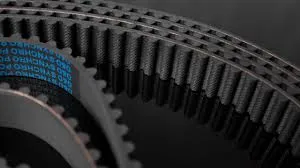- Arabic
- French
- Russian
- Spanish
- Portuguese
- Turkish
- Armenian
- English
- Albanian
- Amharic
- Azerbaijani
- Basque
- Belarusian
- Bengali
- Bosnian
- Bulgarian
- Catalan
- Cebuano
- Corsican
- Croatian
- Czech
- Danish
- Dutch
- Afrikaans
- Esperanto
- Estonian
- Finnish
- Frisian
- Galician
- Georgian
- German
- Greek
- Gujarati
- Haitian Creole
- hausa
- hawaiian
- Hebrew
- Hindi
- Miao
- Hungarian
- Icelandic
- igbo
- Indonesian
- irish
- Italian
- Japanese
- Javanese
- Kannada
- kazakh
- Khmer
- Rwandese
- Korean
- Kurdish
- Kyrgyz
- Lao
- Latin
- Latvian
- Lithuanian
- Luxembourgish
- Macedonian
- Malgashi
- Malay
- Malayalam
- Maltese
- Maori
- Marathi
- Mongolian
- Myanmar
- Nepali
- Norwegian
- Norwegian
- Occitan
- Pashto
- Persian
- Polish
- Punjabi
- Romanian
- Samoan
- Scottish Gaelic
- Serbian
- Sesotho
- Shona
- Sindhi
- Sinhala
- Slovak
- Slovenian
- Somali
- Sundanese
- Swahili
- Swedish
- Tagalog
- Tajik
- Tamil
- Tatar
- Telugu
- Thai
- Turkmen
- Ukrainian
- Urdu
- Uighur
- Uzbek
- Vietnamese
- Welsh
- Bantu
- Yiddish
- Yoruba
- Zulu
Oct . 22, 2024 08:07 Back to list
Understanding Timing Belt Sizes for Engine Performance and Maintenance
Understanding Timing Belt Sizes A Comprehensive Guide
Timing belts play a crucial role in the proper functioning of an engine. They synchronize the rotation of the crankshaft and camshaft, ensuring that the engine's valves open and close at the right times during each cylinder's intake and exhaust strokes. Understanding timing belt sizes is essential for maintenance and replacement to ensure optimal engine performance and longevity.
What is a Timing Belt?
A timing belt is a reinforced rubber belt with teeth that meshes with gears on the crankshaft and camshaft. Its primary purpose is to maintain appropriate timing between these two vital components of an engine. Unlike timing chains, which are made of metal and often last longer, timing belts require periodic replacement. The lifespan can vary, but many manufacturers recommend replacement every 60,000 to 100,000 miles.
Importance of Timing Belt Sizes
When it comes to replacing a timing belt, size matters. The dimensions of a timing belt can affect the performance of your vehicle. Each belt is designed with specific measurements, including length, width, and tooth pitch. An ill-fitting belt can cause misalignment, leading to severe engine damage over time.
1. Length The overall length of the timing belt is critical. The belt must be the right length to fit snugly around the pulleys. If it's too short, it won’t fit; if it's too long, it could slip off or become loose, increasing wear and tear on the belt and the engine components it drives.
2. Width The width of the timing belt helps determine how much power it can transfer. A narrower belt might not handle the demands of a high-performance engine, leading to slippage and premature failure.
timing belt sizes

3. Tooth Pitch This refers to the distance between the teeth on the belt. It must match the teeth on the pulleys to ensure a proper grip. An incorrect tooth pitch can lead to wear, noise, and eventual belt failure.
Common Timing Belt Sizes
Timing belt sizes vary significantly depending on the make and model of the vehicle. Most manufacturers provide specifications on the correct size for replacement. Common sizes can range from around 1000 mm to over 3000 mm in length, with varying tooth pitches and widths. For example, if you were to look at a few popular vehicles
- Honda Civic Typically requires a belt around 1,200 mm long with a specific pitch. - Toyota Camry Often uses a belt size of approximately 1,500 mm. - Ford F-150 May have a longer belt due to its larger engine, often exceeding 2,000 mm in length.
How to Find the Right Timing Belt Size
To find the correct timing belt size for your vehicle, refer to the owner’s manual or consult a professional mechanic. When replacing a timing belt, always opt for quality brands and, if possible, consider replacing related components such as tensioners, water pumps, and pulleys at the same time. These parts are often under stress and could fail if reused, potentially leading to more significant issues down the line.
Conclusion
Understanding timing belt sizes is vital for anyone looking to maintain or repair their vehicle's engine effectively. By ensuring that the right size is used, you can prevent engine damage, maintain optimal performance, and extend the lifespan of your vehicle. Always perform regular checks on your timing belt and consult with professionals for the best practices in replacement and maintenance. The consequences of neglecting this essential component can be severe, leading to costly repairs and compromised vehicle reliability.
-
Upgrade Power Steering Pump Belt for Smooth, Quiet Operation
NewsAug.27,2025
-
Precision Timing Belt & Chain: Engine Performance & Durability
NewsAug.26,2025
-
Precision Lathe Drive Belts: Durable & Reliable Performance
NewsAug.25,2025
-
84.5 Serpentine Belt: Durable & Precision Fit for Your Engine
NewsAug.24,2025
-
Premium Ribbed Drive Belts for Quiet Power Transmission
NewsAug.23,2025
-
High-Performance Vehicle Timing Belt for Engine Precision
NewsAug.22,2025

